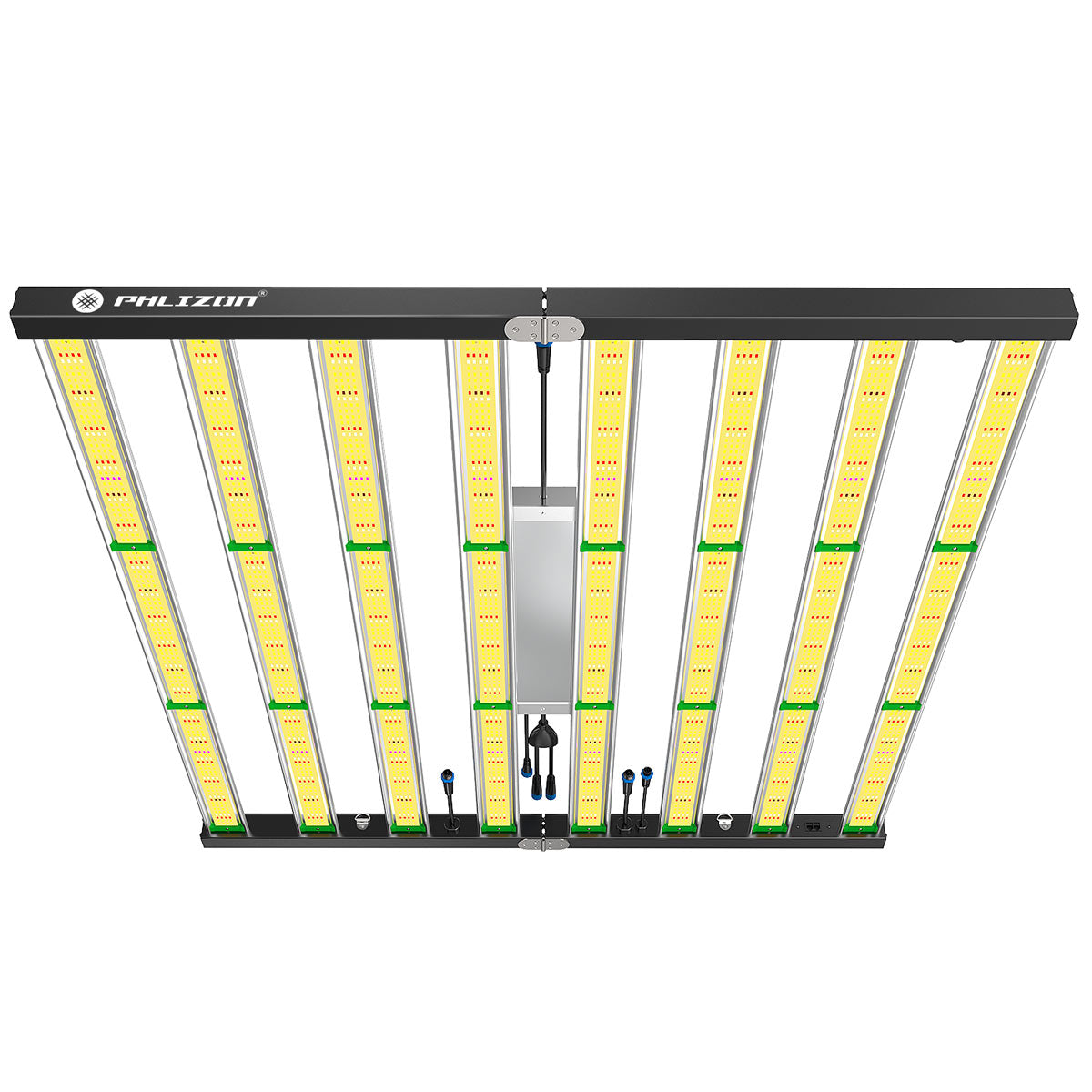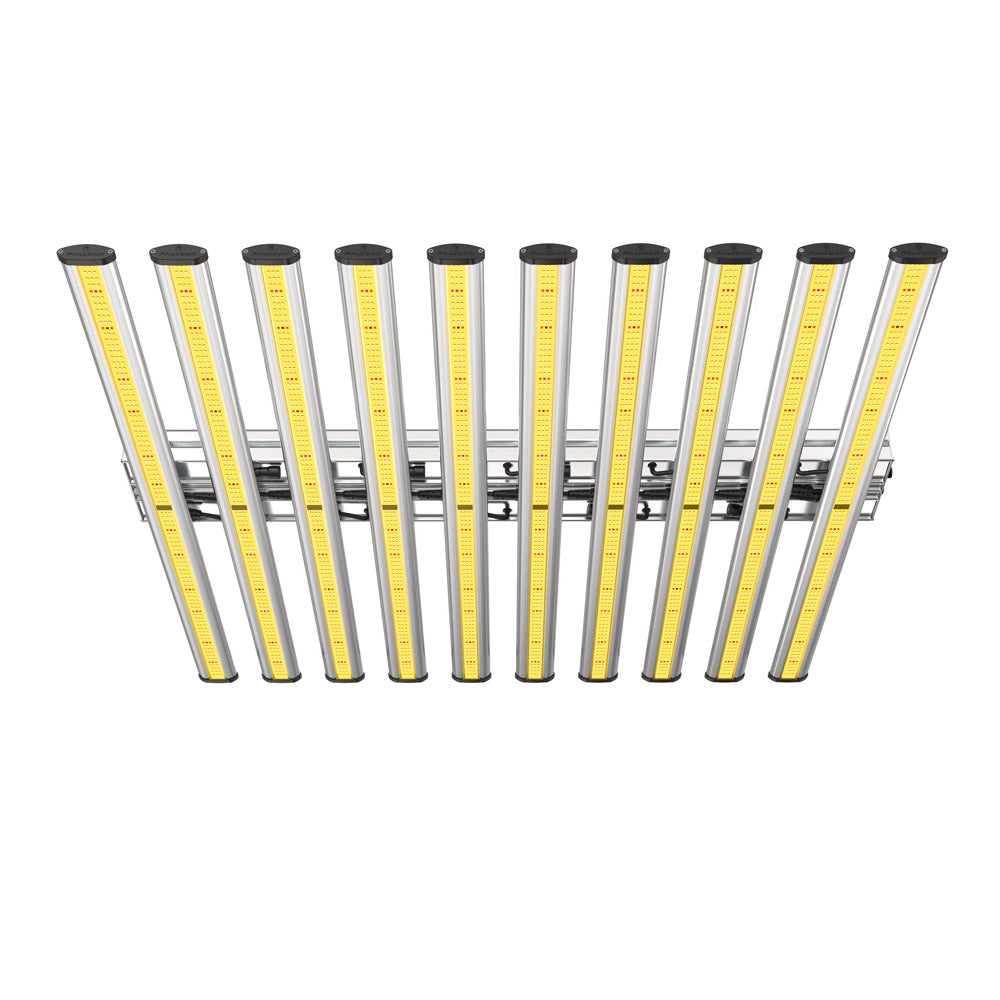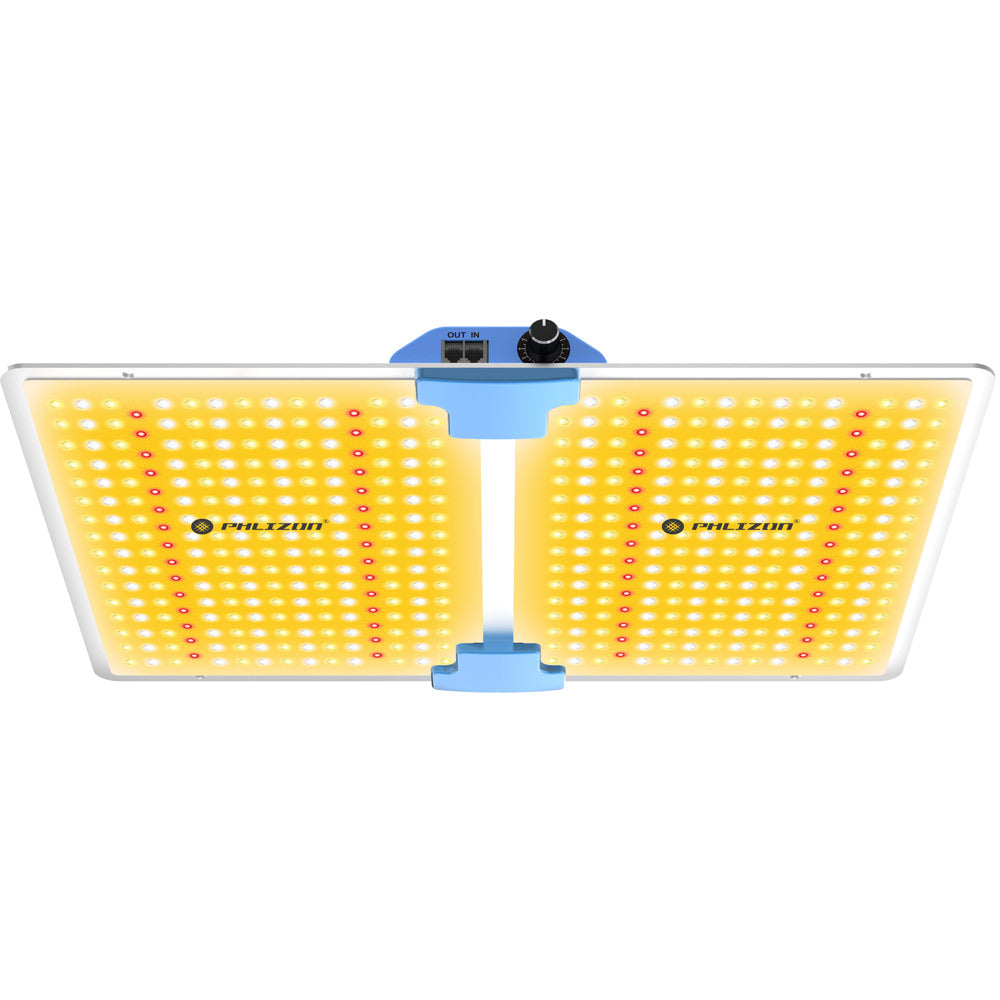Menu
Can You Use LED Grow Lights for Reptiles?
Most people, including you, would second my opinion if I say that LEDs are highly efficient lighting technology.
This is because the term LED is used so extensively, and the fixture is so common that even a novice user without enough knowledge of LEDs would suggest this.
The fact that these lighting diodes constitute a lot of benefits and have a broad range of practical applications— from agriculture to commercial and plant-growing facilities— you’ll find every store and brand to have them in their collection.
However, the idea that these LEDs can be used as a way to provide your reptiles with the best care possible may leave you stunned. If you’re interested in “Can you use LED grow lights for reptiles,” this guide is for you.
Introduction
The Importance Of Proper Lighting For Reptile Habitats.
Light is everywhere that governs all life on Earth. Light has always been a thing to improve visibility and provide illumination, but as technology grows, its effectiveness for health and well-being is extensively revealed.
Light is a necessary component that meets the requirements of many reptile species and simulates their natural habitat better. Similar to how it is used to facilitate plants in photosynthesis, it provides enough energy for reptiles to regulate their body temperatures.
When it comes down to owning a reptile, the matter of lighting is crucial to ensuring good quality of life for your pet. Proper lighting acts just like their powerful 'medicine' for their physical and mental well-being; that’s why it’s also known as an effective appetite stimulant.
With that said, it’s important to mention that the UV part of the spectrum is the most beneficial for reptiles among the broader electromagnetic radiation. UV is known to regulate a reptile’s overall health, including feeding behaviour, activity level, and skin maintenance.
UVB, in particular, is necessary for the reptile's body to manufacture the vitamin D3 required for proper calcium absorption from food.
Without proper UV light exposure, reptiles routinely develop severe, life-threatening illnesses.
Why Are LED Grow Lights A Viable Option For Reptiles When Sunlight Is There?
To reptiles, sunlight is like life. They’re literally called solar-powered creatures, and every aspect of their lives is governed by their daily experience of solar light and heat.
This is because sunlight contains a good proportion of UV that is beneficial for their dietary and metabolic needs.
However, Depending on the species, habitat, weather, and daily activity, this natural sun exposure ranges quite a bit, raising many problems regarding their health.
The most reported issue is their sunlight-limited exposure to reptiles caged in glass or plastic enclosures. Even if you manage to keep them in areas with lots of sunlight exposure, not all wavelengths of UV rays can penetrate through glass and plastic. This is why bulbs that produce UV rays are essential to a companion reptile habitat.
Most often, sunlight excessive heat exposure, mostly during summer, can affect their health and safety and make the environment unbearable for them to process their primary nutrient intake.
To properly care for our exotic avian and herp pets, LED grow light provide synthetic ultraviolet lighting for our pet’s indoor lifestyle. When it comes to keeping reptiles healthy, Heat regulation and UV exposure are two of the most important considerations, and LED lighting can provide both of these at optimal levels.
LED grow lights adjustable UV feature greatly helps tailor your reptile’s environment precisely to its needs, minimising effort on your part. Setting up an LED grow light for reptiles is like a symphony of colors in motion that helps them to live a healthy lifestyle.
Their efficiency also extends to cost-saving features where you don’t have to replace the light every other day. If you’ve got reptiles in your enclosure, they will help to ensure exotic pets live healthy and long.
Understanding Reptile Lighting Needs
The Essential Role Of Lighting In Reptile Health: The Need For UVA, UVB, And Heat.
Light and heat are the two most critical environmental factors that dictate how a living organism will respond. These elements contribute significantly to all living creatures in terms of physical and psychological growth.
Just like plants require an adequate amount of light to perform their most crucial process of photosynthesis, Reptiles need proper lighting to regulate their physiological and other behavioural functions.
This daily agenda for reptiles and other living organisms is at least partially dictated by the sun. Sunlight not only helps them feel warm and happy, but it also provides necessary vitamins.
Broadly speaking, Proper lighting for reptiles here includes the UVA, UVB, and regulated heat that will define their optimal health and well-being.
Here is a brief description of how each contributes to the best interest of reptiles.
Ultraviolent A:
UVA radiation measuring a wavelength of 320-400 nanometers appears to induce natural behaviour, reproduction, and the establishment of circadian rhythms (internal “clocks”) in many reptiles and amphibians.
They help reptiles recognize patterns of their fellow species and play a big role in assisting them in detecting movement. It also enables them to recognise their diet foods and generally stimulates their appetite by telling them what's good.
UVA also provides the visual cues that control the basking instincts needed to regulate their body temperature. UVA generally promotes more activity, foraging, social behaviours, and reproductive activities.
Ultraviolent B:
While UVB ranges in 280-315nm wavelength in reptiles facilitates the synthesis of vitamin D3, allowing reptiles to process calcium in their systems, thus preventing or reversing metabolic bone diseases.
Failure to get an adequate level of UVB light can increase the chances of developing physical problems such as low blood calcium, mineral deficiency, and stunted growth, which can be fatal if left untreated. In addition, recent studies have linked sub-optimal vitamin D levels with poor immune system function.
Generally, the idea of considering both the necessary UV lighting and appropriate heat means making the exotic pet's life survivable for different stages of growth and development.
Heat:
Reptiles are cold-blooded animals that require external heat sources to regulate their body temperature. The heat processes reptiles' metabolic mechanism more efficiently, resulting in digestion, nutrient absorption, and overall bodily functions.
Also, Warmer temperatures accelerate their agility and muscle function, allowing them to move, hunt, and perform other essential behaviours more effectively.
Additionally, the production of hormones and an effective immune system are closely tied to warm temperatures.
What are LED Grow Lights and their Primary Use in Plant Cultivation.
LEDs are small pieces of electrical hardware that produce a lot of light ‘efficiently’. LEDs have tons of benefits, including their efficiency in providing a desirable spectrum with minimum heat generation and electricity consumption, unlike many other traditional bulbs.
From the plant's perspective, LED grow lights are an excellent choice as they emit light in the PAR spectrum of the electromagnetic wavelength for plants to perform photosynthesis and regulate many other physiological processes.
These light chambers are built to substitute sunlight and offer the right color spectrum for plants to flourish and grow optimally.
The Typical Light Spectrum Provided By LED Grow Lights.
The efficiency of a well-designed LED grow light set-up is the light spectrum provided by these fixtures and its capability to customize this for your growing environment.
Apparently, LED grow light covers a spectrum from UV to far-red wavelength. This means that from the plant seedling stage to its overall flowering period, LEDs act in favour of the plant growth journey.
Blue light helps in vegetative growth by helping plants develop healthy stems, leaves, and branches. On the other hand, red light stimulates the production of flowers and fruits.UV and Infrared LEDs are associated with enhancing the production of secondary metabolites and heat efficiency.
Comparing LED Grow Lights with Reptile-Specific Lights
When discussing Reptiles' specific light, the direction is more toward lights replicating the natural sunlight conditions so that reptiles can experience more comfort and support.
They specifically belong to the UV spectrum of the light wave, where each species can maximise its growth mechanism. These include Full spectrum lights such as fluorescent tubes, compact fluorescent bulbs, and mercury vapour bulbs.
Conversely, LED grow lights come in varied forms, from pure cool white to warm white fixtures. However, full-spectrum LED Grow Lights provide a sun-like environment by replicating the same spectrum as the sun. However, these light chambers don’t release UVC rays but emit UVA and UVB rays to a certain degree.
The broad spectrum flexibility of LEDs makes them more of a suitable choice. We'll tell you why. LEDs give you complete control over the light spectrum so that you can fine-tune it to bring it in favour of the reptile.
For example, reptiles that are more active at night can benefit from these light sources, which is otherwise impossible with the sun.
As much as light is essential for most reptiles, so is the nighttime. LED grow light, with its ability to mimic sunlight and adjustable control, signifies its worth. Putting them on during the day and dimming these lights at night altogether ensures an optimal environment for reptiles.
Guidelines for Using LED Grow Lights with Reptiles
Arranging Reptile-Friendly Spectrum:
To make the LED grow light work out for reptiles, a reptile-specific light spectrum, i.e., UV rays, must be adjusted for their growth, behaviour, and development. Most LEDs come with in-built UVB, while most require additional lighting diodes. Whatever the case, LEDs in cool white and warm white with a colour temperature of 5000K to 7000K are significant.
Analyzing Light Intensity:
When the factor of light intensity comes, not all reptiles respond equally. What we mean here is reptiles are varied in their species and genetic formation. Some of them need high light intensity in basking areas, whereas some survive happily under more diffuse light. When installing LED in a setup, it makes sense to determine the species type. dimmable led grow lights with switches are a plus point here because you can fine-tune the intensity in the reptiles' best interest.
Setup a photoperiod:
Reptiles, like many other animals, respond optimally under a day-night cycle. When LEDs are placed inside their enclosures, you need to set up a timer so that these reptiles can have consistent daylight exposure of 12-14 hours a day and then a night cycle for efficient growth.
Provide a Basking Spot:
The least heat-generating characteristics of LEDs put them on the unfavourable lighting list for some species, primarily the diurnal ones. Because they need a basking spot with intense lighting and warmness, LEDs are not enough for them. For this, you need to position the LED in a way that can create a gradient within the enclosure. You can also add supplemental lighting for that ambient temperature, such as heat lamps or ceramic heat emitters.
LED fixtures should be placed Overhead
Reptiles have eyebrow ridges, and some even have upper eyelids to shade the eyes' surface. To put LED over these kinds of species, it’s recommended to place them directly above a reptile’s head and not to the side. Intense visible light shining sideways into its eyes is stressful; it's just like driving a car toward the setting sun.
Keep a Respectful Distance
For LED light to work, it must reach the pet in an unfiltered form, meaning there must be no glass or plastic between the pet and the light. Also, the light should be within approximately 12 inches (30 cm) of the reptile for him to receive any benefit.
Pay Attention to Behavioral Changes.
Putting LEDs inside the reptile's enclosure is not just enough. You need to assess the temperature regularly so that you can take prompt action if there are any signs of stress, discomfort, or health issues.
Alternative Lighting Solutions for Reptiles
- Compact UVB Bulbs
These lighting fixtures are designed to emit UVB light in a more compact and condensed form. They’re purposely built to provide optimal UVB rays for tropical and sub-tropical species of reptiles and amphibians to fuel important biological processes.
Know that UVB bulbs for reptiles come in three different strengths: 5.0, 10.0, and 15.0. The best choice for your reptile will depend on the species and their place of origin. Desert-dwelling reptiles require higher wattages of UVB bulbs. However, those from tropical or otherwise tree-covered habitats will thrive with lower UVB percentages.
The good part is that the bulbs’ smaller size and low wattages make them ideal for use with smaller terrariums, isolation enclosures, “sick tanks,” and the like. However, they don’t tend to offer the same output as a full tube but can be very useful for providing UVB to low-output species such as amphibians or invertebrates.
The drawback is that there is an initial “burn-in” period, where the bulb emits more intense UV output. This means the bulb should be moved several inches further away during the first few weeks.
They can be marked as an effective light source for captive reptiles who aren't getting as much sun as possible. The UV-B component helps them get the nutrients that they need, particularly in reptiles that don't get much D3 from their diet.
Compared to LED, these bulbs lose their intensity over time and require frequent replacement every 6-8 months. However, LEDs remain efficient for long and deliver optimal lighting with more than 50,000 hours of efficacy.
- MVB (Mercury Vapour Ballast)
These high-output heat bulbs give you heat, light, and UV; when we say UV, we mean UVA and UVB. They’re most suitable for use in open enclosures or large vivaria. This makes them ideal for creating basking areas for species of high UV-demanding animals such as iguanas, bearded dragons, and tortoises,
This system seems to be cost-effective when you think from an angle that you’re getting three products in one for heat, light, and UV.
A good component is its ballast, which helps start the bulb and then maintains the proper voltage and current during operation. It ensures the bulb runs at the correct power level and prevents issues such as flickering or overheating.
However, the drawback is that a thermostat cannot control these bulbs, and so is likely to overheat if used in enclosed spaces, so they're best used over an open-topped enclosure such as a tortoise table, where they can be moved higher or lower as required to reach the optimum temperatures and UVI.
- T8 UVB tubes
These are led grow light strips that many reptile keepers have been successfully using for decades. They’re more suited to longer enclosures where you need the UVB fixtures to cover a larger area. However, they are not as powerful or effective as the more modern T5 lamps and have a lifespan of around 6 months.
- T5 tubes
T5 has a higher output and offers brighter and higher quality UVB light. They produce more UVB per wattage of electricity, making them both more powerful and energy-efficient. They have a lifespan of around 12 months before they stop emitting adequate amounts of UVB.
- Basking Lights
Basking lights are heat-generating fixtures specifically made for any reptile vivarium setup to create a varied internal temperature for reptiles to use as self-regulating light. They can be in the form of incandescent or halogen bulbs.
Conclusion
We love our furry companions, and we’re always concerned about providing them with the best care possible. From quality food to cosy spaces and toys, giving them an appropriate amount of UV grow light can be the best thing you can do for them.
The reason why plant-growing lights are often recommended for vivarium enclosures is that LEDs contain the favourable spectrum that helps these reptiles grow healthier and more active.
However, failure to provide UV light can predispose a pet reptile to metabolic bone or nutritional disease or other life-threatening illnesses.
For them to grow happier and healthier in vivarium, some LED guidelines need to be followed for their effective development and growth.
Featured blog
- Choosing a selection results in a full page refresh.

















